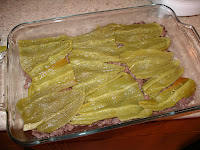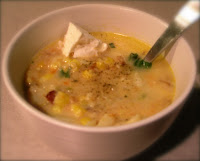For the cake:
This cake gets better with age. For best results, start a day or two before you plan to serve it. Contrary to popular belief, the three milks in this cake refer to heavy cream, sweetened condensed milk, and evaporated milk (not cow, goat, and llama milk).
To make the base for the cake you will need:
1 cup all-purpose flour
3 room temperature eggs (whites and yolks separated)
1 cup sugar
1 whole vanilla bean (maybe too expensive to be worth it?)
1/4 cup milk

With an electric mixer, beat the egg whites for several minutes, until they start to form soft, white peaks:


Slowly add in the sugar and mix until firm. Finally, add the egg yolks, one at a time, followed by the milk and vanilla bean (for the vanilla, you should make a lengthwise slit in the bean, and scrape out the paste on the inside of the bean) and mix until smooth. Incorporate the flour. Add this mixture to a buttered cake pan (9'' x 11'' or other cake sized pan) and bake at 325 F for 20-30 minutes.
While the cake is doing its thing, grab a big bowl or cup to mix up the three milks (8 oz cream, 12oz evaporated milk, 14oz sweetened condensed milk). Like so (if you look closely you'll be able to determine the real author of these blog posts...):

Once the base of the cake is done, poke holes in the top with a toothpick or fork and then pour the milk mixture over the cake and refrigerate for several hours (the longer the better).
While the cake is getting chilled, you can make the frosting. For this you will need:
2 egg whites
1/2 to 2/3 cup honey (or corn syrup)
The eggs need to heat up a bit, so you can set a pot of water on the stove and bring it to a boil. Once boiling, turn down the heat a bit and place a heat-safe bowl containing the egg whites and honey in the water. Mix on medium speed for several minutes, monitoring the temperature with a candy thermometer if you can. The frosting is ready once the temperature of the mixture gets to 140 F. If you don't have a thermometer handy, I would say to just keep on mixing until it gets good and firm. This will probably take 5-10 minutes. When it's finished, pour on top of the cake and put back in the fridge until you are ready to serve it up. Mmmmm!














